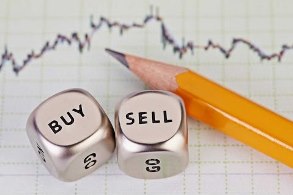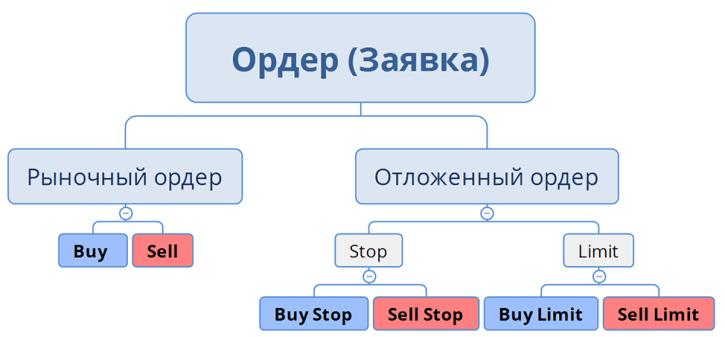Types of Forex trading positions
In the terminology of financial markets, the word “order” is used quite often, meaning a trading order.
Experienced traders often replace this term with the word "position".
Depending on the direction of the transaction, positions are divided into long (purchase of an asset) and short (sale of an asset), according to the duration of the transaction they can be short-term or long-term, and according to the opening time - urgent or deferred.
Based on this classification, orders are based that can be opened in the trader’s trading terminal.
1. Buy (long position) - buy. This type of transaction is intended for the purchase of a selected financial instrument. A Buy order should be opened if the trader’s forecast suggests an upward movement of the price chart.
2. Sell (short position) - sell. Orders of this type should be considered for opening only if the trader expects a downward trend in the pricing of the selected financial instrument.
 Sell and Buy orders are the most common among short-term traders.
Sell and Buy orders are the most common among short-term traders.
Opening such orders involves the purchase/sale of a financial instrument at market value and instant opening. However, the functionality of modern trading platforms does not end there. Every trader today can open trades at any price.
The order will be executed when the chart reaches the price level specified by the trader. Such market orders are usually called pending.
Types and features of using pending orders
Pending trading orders are divided into 4 types:
1. Buy Limit - a purchase transaction at a price that is lower than the market value of a financial instrument.
It is advisable to consider placing this order during a downward trend. The cost of opening a transaction in this case is the potential minimum, after reaching which the trader expects a trend change or a prolonged correction.
2. Buy Stop - a trading order to purchase an asset at a price exceeding the current market value.
Set above the local maximum. According to the rules of technical analysis confirmed in practice, it is known that if the chart overcomes a strong resistance level, it indicates a continuation of the upward trend.
3. Sell Limit - opening a sell transaction at a price that is higher than the current one.
Placing this order makes sense during an uptrend, which, upon reaching a certain level, according to the trader’s assumption, may change to the opposite one under the influence of fundamental factors. 4. Sell Stop - a sell order, the opening price of which is located below the market value. It is set 5-7 points below a strong local minimum (support level), overcoming which will indicate the development of a downward trend.

The use of pending orders in trading has a significant impact on profitability indicators. Beginner traders try not to use this tool, since market noise can cause a false breakout of an important level by the chart.
This will lead to the triggering of a pending order and, consequently, to losses.
No one is immune from such a market phenomenon. In fact, for many successful traders, pending orders are an integral part of profitable trading.
The key mistake of novice traders is determining local levels on low timeframes, which leads to false triggering of pending trading orders.
If you determine support and resistance levels on periods H1 or H4, then the probability of their false breakout is reduced to 10%. To more accurately determine the most significant price levels, it is recommended to use Bill Williams fractals or cluster charts.
Strategy on pending orders - http://time-forex.com/strategy/strategiya-otlozhennykh-orderov
Advisor using - http://time-forex.com/sovetniki/sov-doudlepro


